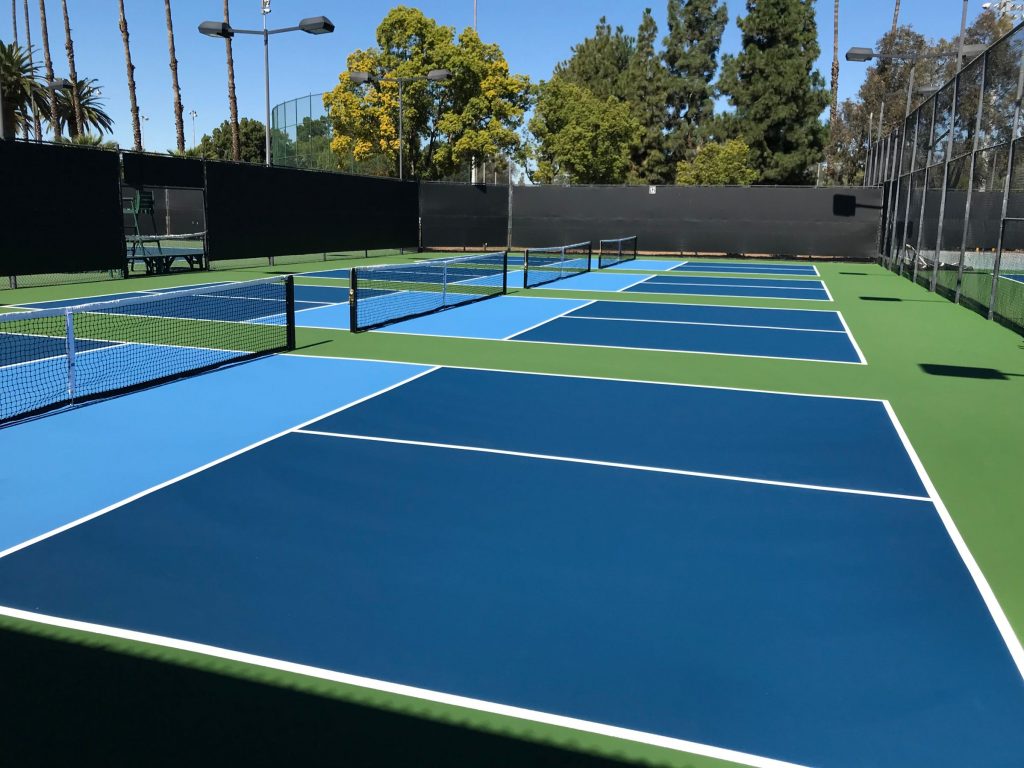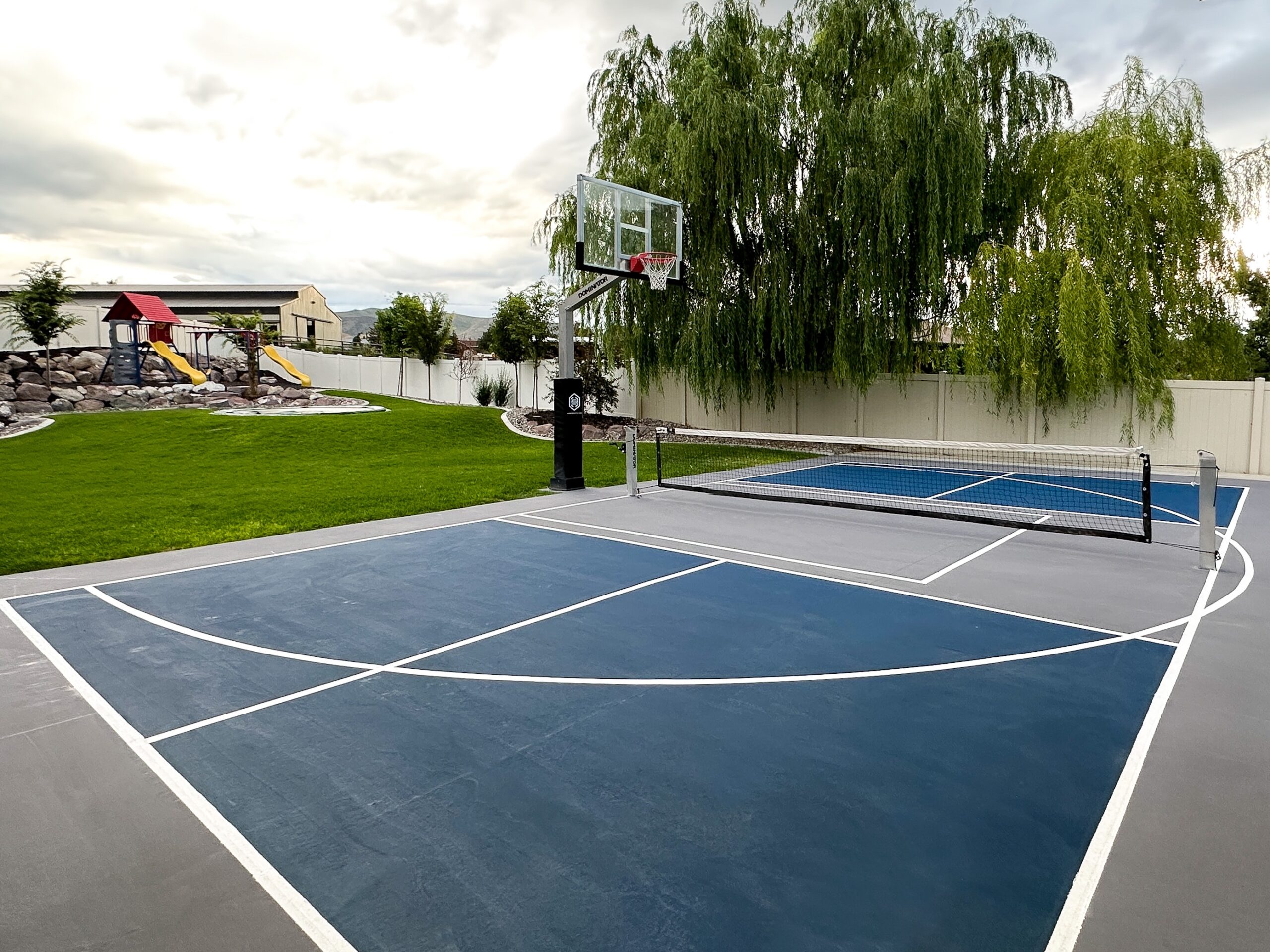Navigating Rules for Pickleball Court Building in Your Area
Building a pickleball court in your location calls for a nuanced understanding of different neighborhood policies, consisting of zoning regulations, building licenses, and safety requirements. Involving with local authorities and the neighborhood is critical for guaranteeing conformity and cultivating support.
Comprehending Neighborhood Zoning Laws
When considering the building of a pickleball court, recognizing local zoning laws is vital to making certain compliance and preventing prospective lawful concerns. Zoning regulations dictate exactly how land can be utilized and usually consist of specifications pertaining to leisure facilities. These legislations can differ significantly by town, affecting variables such as court positioning, illumination, noise, and size degrees.
Prior to starting building, it is crucial to consult the local zoning board or preparation division to identify the details laws that use to your property. Certain areas might restrict recreational tasks, while others might need particular licenses or adherence to particular standards. It is additionally crucial to think about problems, which determine how far structures should be from home lines or other structures.
Furthermore, personal developments, such as home owner associations (HOAs), may enforce their own rules relating to the building and construction and use of pickleball courts. Understanding these laws can stop costly alterations or litigation down the line. Involving with local stakeholders and area members can give useful insights and foster support for your task, making sure that it aligns with the area's expectations and demands.
Acquiring Necessary Building Allows
Just how does one navigate the complexities of acquiring essential building permits for a pickleball court? Commonly, you will need to submit an in-depth website plan that details the recommended court measurements, products, and layout.

When authorizations are obtained, it is vital to follow any type of examination schedules and demands throughout the building stage. Maintaining communication with regional authorities will certainly promote a smoother authorization process and help prevent prospective troubles. By extensively preparing and recognizing the permitting landscape, you can successfully navigate the complexities included in constructing a pickleball court while staying certified with all neighborhood regulations.

Assessing Environmental Influence
When intending the construction of a pickleball court,A detailed evaluation of ecological impact is vital (Pickleball court construction). This analysis helps determine possible effects on regional ecological communities, water resources, and neighborhood appearances. Key elements to take into consideration consist of site selection-- guaranteeing that the court is not improved ecologically delicate land, such as marshes or habitats for jeopardized species
Soil stability and drain patterns need to be analyzed to avoid disintegration and water merging, which could negatively affect surrounding greenery and wildlife. Furthermore, the option of products is essential; choosing sustainable and environmentally friendly choices reduces environmental damage.
The implementation of effective stormwater management practices is another vital aspect, as it helps mitigate drainage and sedimentation. Involving with neighborhood ecological companies can offer important insights right into laws and finest methods particular to your area.
Last but not least, area input can be helpful in recognizing any type of regional environmental problems and cultivating support for the project. By conducting a detailed ecological effect assessment, stakeholders can ensure that pickleball court building lines up with lasting methods and contributes favorably to the neighborhood's ecological wellness.
Adhering To Security Standards
Making certain compliance with safety and security requirements is important for the effective building and operation of a pickleball court. Following recognized safety and security policies decreases the risk of accidents and injuries, guaranteeing a secure atmosphere for gamers.
Secret safety and security requirements consist of appropriate court measurements, surface products, and lights demands. The court has to satisfy the main dimensions of 20 feet large by 44 feet long for increases play, with suitable barrier areas to stop injuries from wayward balls. Pickleball court construction. The surface needs to be constructed from non-slip products to boost grip and reduce the probability of drops
Additionally, illumination has to suffice for night play, giving uniform illumination to prevent darkness that can hinder visibility. Regional building regulations might also dictate particular demands for secure fencing and useful source net height to guarantee player safety and security and protect against unauthorized access to the court area.
Routine assessments and maintenance are necessary to maintain these criteria with time. By focusing on safety compliance, court owners not only protect players but also foster a positive credibility within the neighborhood. This commitment to security can motivate better engagement and pleasure of the sport, eventually adding to its growth and sustainability.

Engaging the Area in Planning
Community involvement in the drawing board of pickleball court building and construction can considerably improve the job's total success. Involving neighborhood residents and stakeholders fosters a feeling of possession and urges joint decision-making, which can bring about Related Site broader support for the initiative.
To efficiently include the neighborhood, organizers must start public conferences or workshops, giving a system for homeowners to articulate their point of views and choices pertaining to area, layout, and services. Studies and responses types can likewise be used to gather insights from a larger audience, ensuring that varied viewpoints are thought about.
Additionally, developing a neighborhood consultatory board can facilitate ongoing discussions and address concerns throughout the preparation procedure. This board can include representatives from various demographics, such as local colleges, entertainment organizations, and neighborhood watch, therefore magnifying neighborhood representation.
Reliable interaction is essential; updates about the task must be frequently shared through e-newsletters, social networks, or local bulletins. By focusing on area interaction, planners can grow interest, alleviate prospective opposition, and create a pickleball center that truly resonates with local values and needs. This joint method not just enhances the task however additionally enhances community ties.
Conclusion
In final thought, browsing the intricacies of pickleball court building demands a comprehensive understanding of local helpful hints policies, including zoning legislations, structure authorizations, and safety and security criteria. By sticking to these standards and cultivating collaboration, successful implementation of pickleball courts can be achieved, promoting leisure chances and area wellness.
Constructing a pickleball court in your area needs a nuanced understanding of various local policies, including zoning laws, building permits, and safety standards.When considering the building of a pickleball court, understanding local zoning laws is essential to guaranteeing compliance and staying clear of possible lawful problems. By thoroughly preparing and understanding the allowing landscape, you can effectively navigate the complexities entailed in creating a pickleball court while staying compliant with all neighborhood guidelines.
In final thought, navigating the intricacies of pickleball court building necessitates a comprehensive understanding of neighborhood guidelines, including zoning laws, structure licenses, and safety criteria. By adhering to these standards and promoting collaboration, effective application of pickleball courts can be attained, promoting recreational chances and community health.